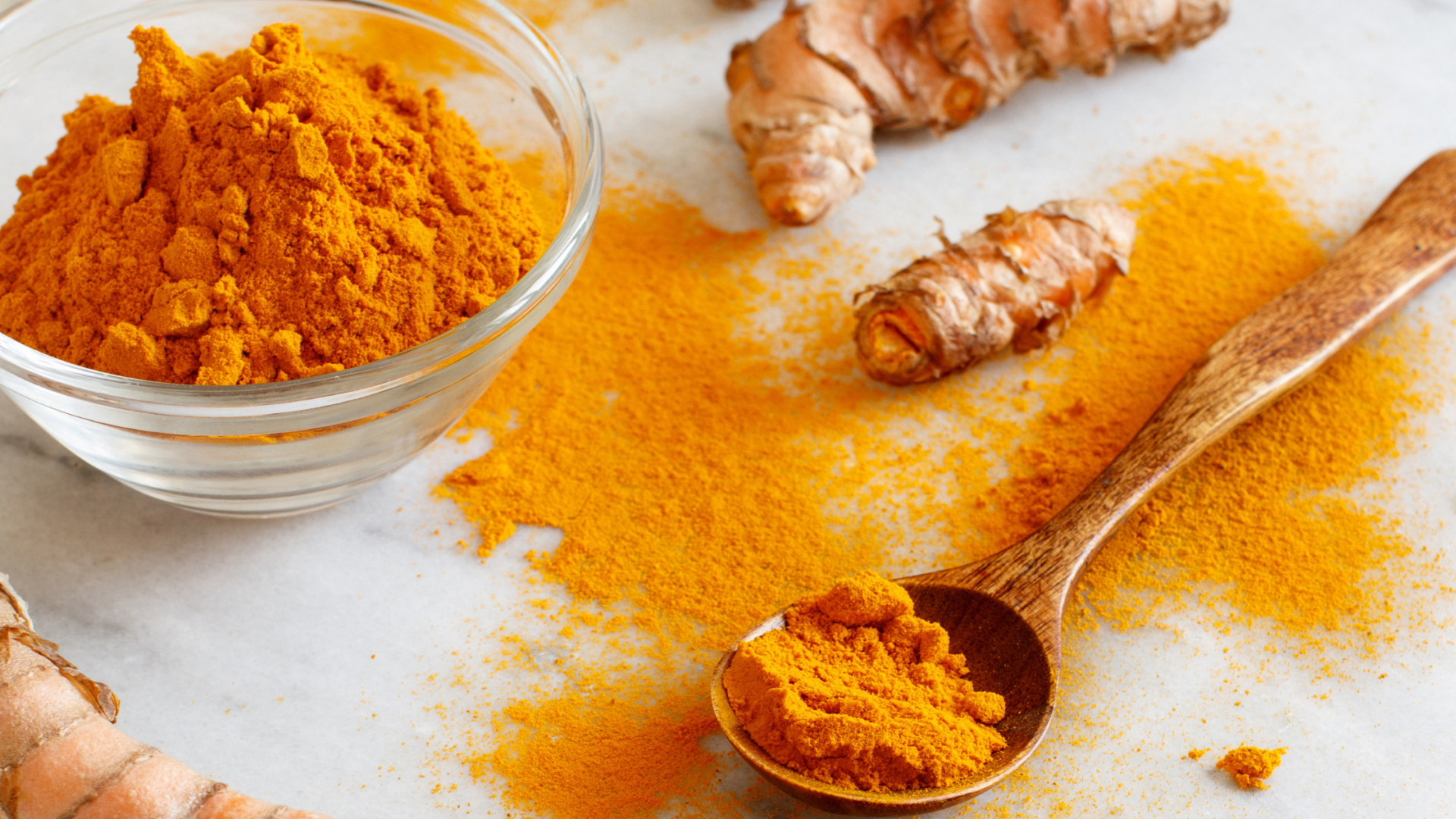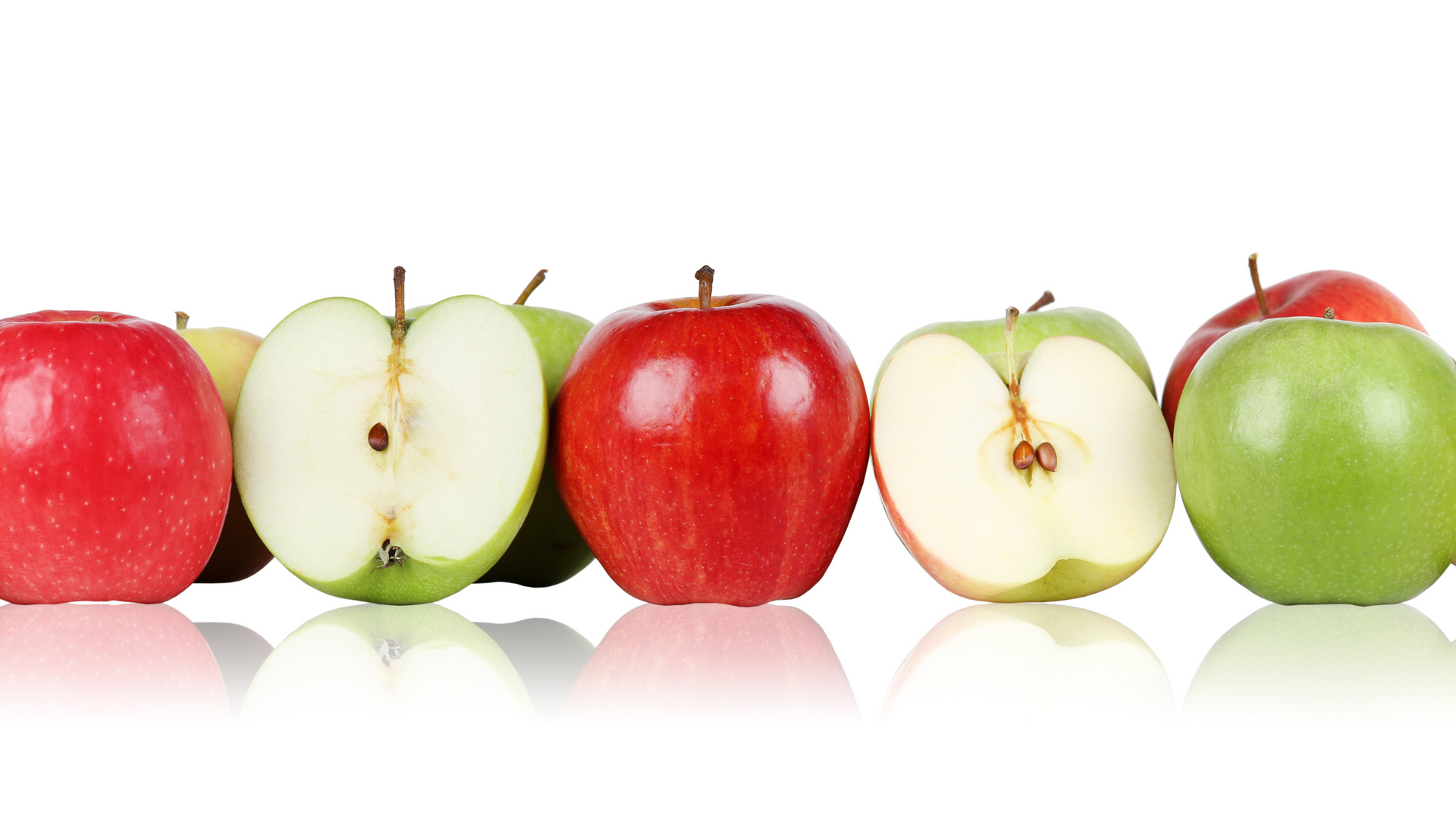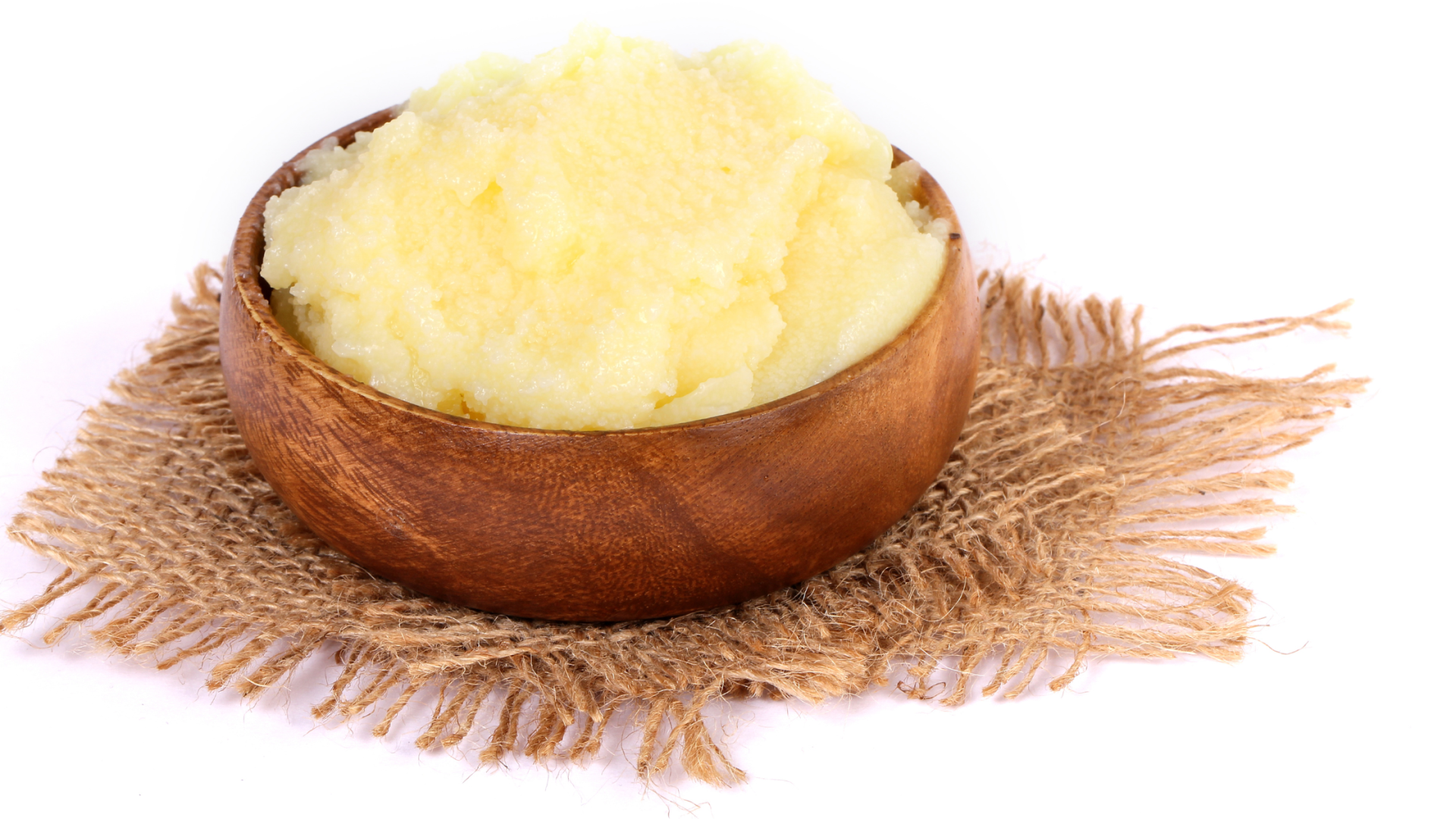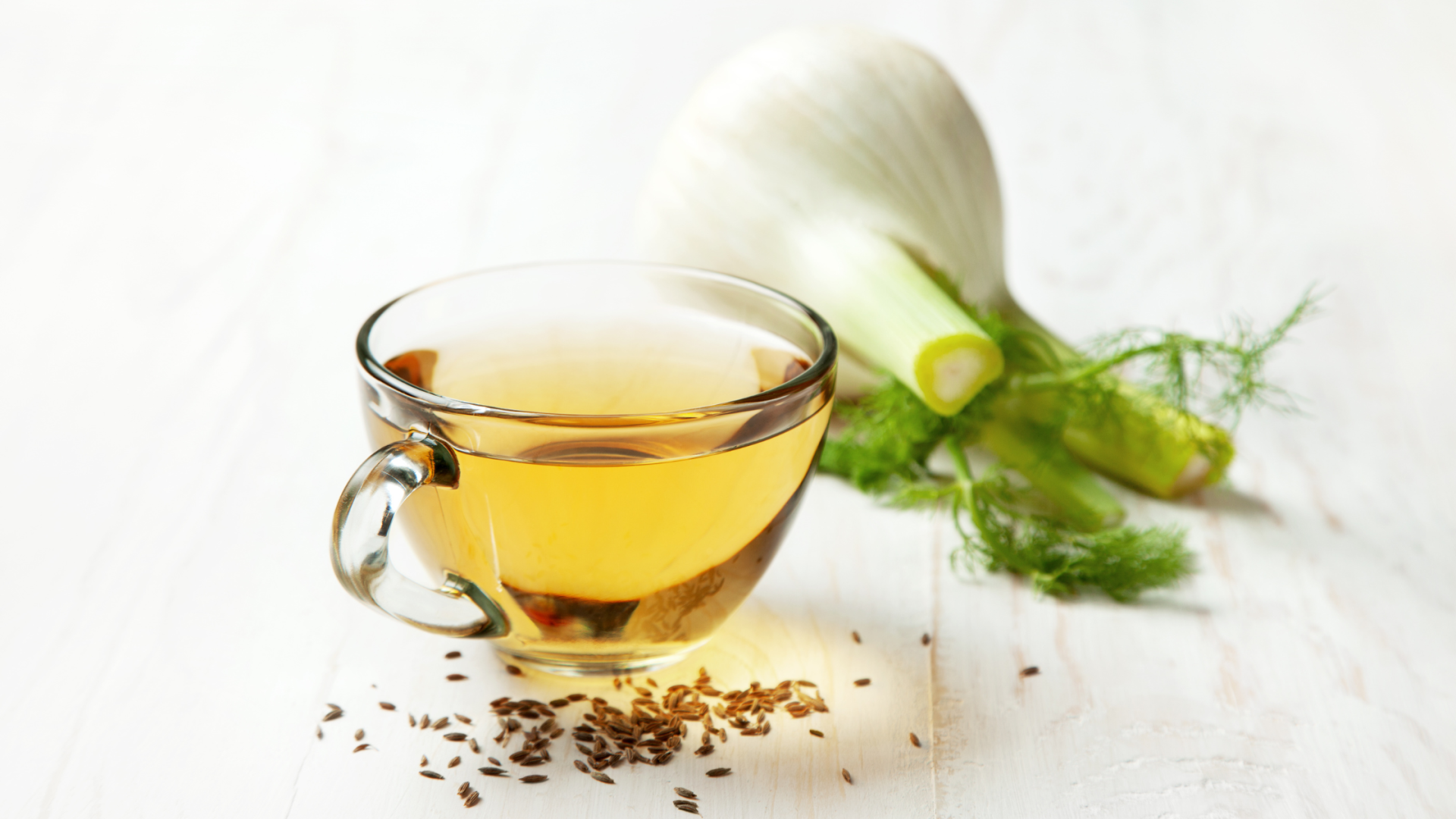The Power of Turmeric
Turmeric is used lavishly for colour and flavour in Indian cuisine. Did you know that turmeric has many health benefits and is highly used and regarded in Ayurveda.
Fresh turmeric looks a little like ginger on the outside. On the inside, turmeric can be either red or orange. The red is considered sacred and only the yellow is used medicinally and in cooking. In Ayurveda, the sister science of Yoga, turmeric is believed to cure the whole person and is beneficial for all three doshas. (see more information on Doshas here). According to Ayurvedic tastes, turmeric is considered bitter and slightly pungent.
Studies have shown that Curcumin longa , or turmeric, inhibit prostaglandin and stimulates the creation of cortisol, which relieves inflammation. It appears to act like capsaicin, an active ingredient in cayenne pepper, by depleting nerve endings of the neurotransmitter substance P. When turmeric was taken internally along with cayenne pepper in an animal study, it significantly lowered inflammation. In Western science and medicine, the effectiveness of turmeric and inflammation is being widely studied, and you can find many articles on these studies by going to Pubmed and searching turmeric or curcumin.
Turmeric and Ayurveda
In Ayurveda, turmeric is believed to be effective for the body for more than just it's anti-inflammatory properties. This amazing herb is believed to:
- be a good blood purifier
- work as a tonic to aid digestion (maintains the flora of the intestines, reduces gas)
- relieve congestion
- have a soothing action on respiratory ailments such as cough and asthma
- reduce anxiety and stress
- be anti-arthritic
- act as a natural anti-bacterial
- be anti-inflammatory
- help significantly with oral health care (due to it's anti-inflammatory properties)
- aid pain relief management
- remove toxins from the body
- be good for the brain
- be heating to the body
- be useful in the treatment of diabetes
- improve skin - remove blemishes and imparts glow
- be useful for all three doshas
- stimulate Vata though it doesn't aggravate it (cause an imbalance)
How can you use Turmeric?
Turmeric can be used in the diet in a number of ways. Here are just a few examples:
- Add turmeric to high-protein food to assist digestion, prevent the formation of gas and to maintain the flora of the large intestine
- Use turmeric as a gargle to relieve inflammation of the tonsils and congestion in the throat. Mix two pinches of turmeric and two pinches of salt in a glass of hot water and gargle
- Turmeric paste may be applied locally for bruises, abrasions or traumatic swelling. Add a pinch of salt to 1/2 teaspoon of turmeric, mix to a paste and apply to the affected area. You will find the pain, swelling and inflammation are quickly relieved
- To relieve bronchial cough, a dry spore throat or tonsillitis, at bedtime drink 1 cup of hot milk and 1 teaspoon of turmeric boiled together for 3 minutes
- For mouth sores, apply turmeric directly to the affected area of the mouth.
- For general health and well-being, drink a glass of Turmeric Milk daily (see recipe below)
- For dogs, a spice paste(also known as Golden Paste) made of turmeric, black pepper and coconut oil is commonly used to aid skin issues and reduce inflammation
- Adding black pepper to turmeric aids the absorption of turmeric in the body
- 1 teaspoon of turmeric per day (either in a drink or in food) is beneficial for overall well-being and support
You will find Turmeric commonly used in Indian cuisine in dishes such as eggs, curries pickles, desserts and more. A wonderful way to include turmeric in your diet to support your digestion and well-being, is to have this delicious Turmeric Milk each day.
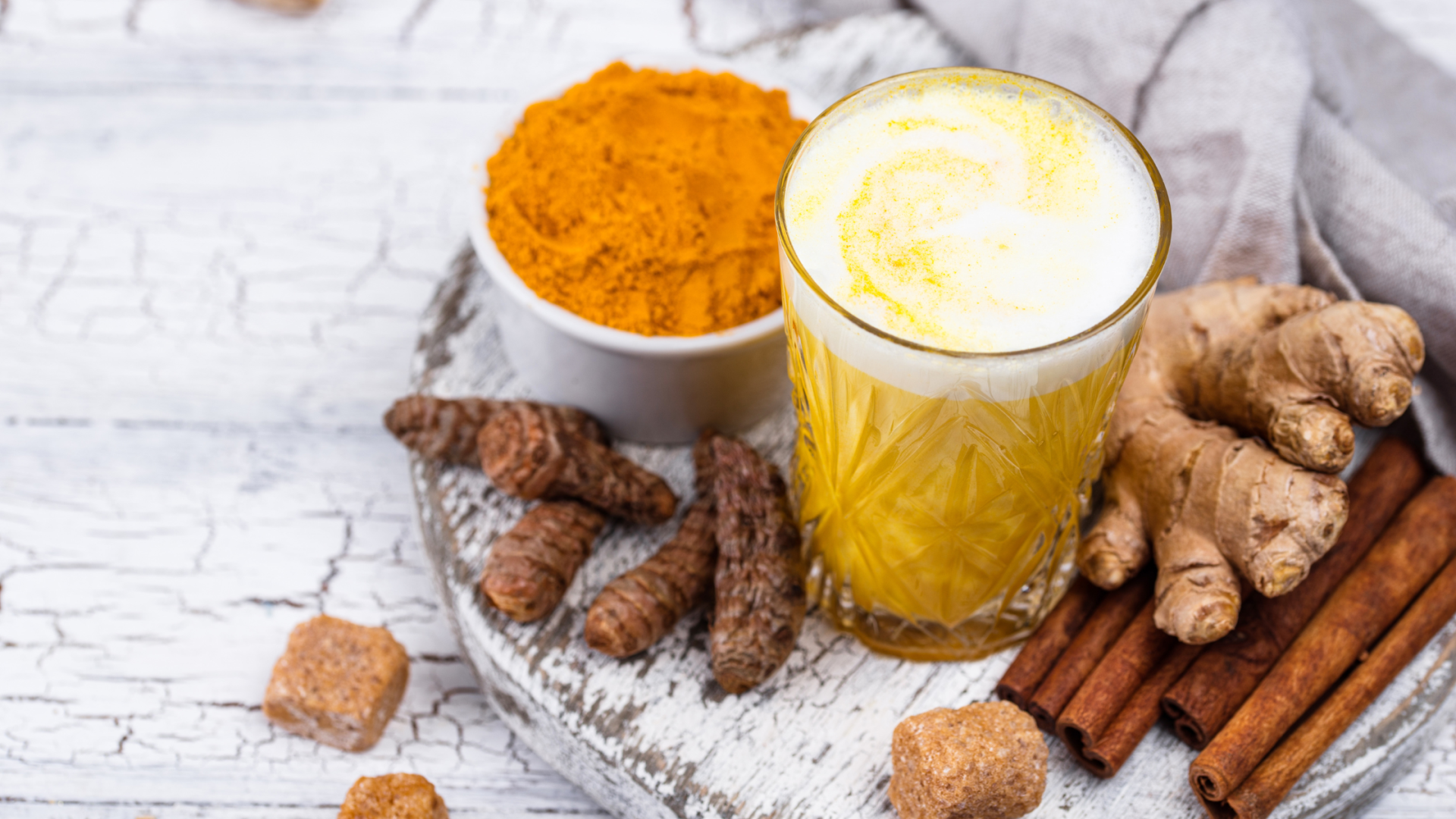
Turmeric Milk
You will need:
- 1 teaspoon freshly grated ginger
- hot water
- milk of choice
- 1 cardamom pod, gently crushed to open
- 1 clove
- 1 whole black peppercorn
- 1 teaspoon turmeric
- 1/2 teaspoon raw sugar
What you do:
- Choose the mug or cup you will have your drink in. Add 1/4 of this cup size of hot water, and 3/4 of this cup size of milk to a small saucepan
- Gently and slowly heat (making sure you watch to prevent the milk boiling over)
- Pound the clove, black peppercorn and cardamom in a mortar and pestle and add to the heated milk. Add in the ginger and turmeric. Mix to combine
- Bring the milk to to the boil (be careful it doesn't overflow)
- Reduce the heat and allow the milk to gently boil to reduce the water from the mixture. Keep stirring
- Once the mixture has reduced, switch off the heat and strain the mixture into your mug or cup.
Tips:
- If you don't have fresh ginger, a pinch of dry ginger can be used. Use sparingly as dry ginger can be very heating to the body
- Crush the cardamom pod gently to open it. Use the seeds and skins. The cardamom is considered cooling to the body
- If you have a Pitta dosha, ease off the clove. You may want to omit or use half a clove as it can be very heating to the body for the Pitta dosha
- If you don't have whole black peppercorn, ground pepper can be substituted. Black pepper is used to aid the absorption of turmeric in the body
- Raw sugar is added to help aid digestion. It also reduces the acidic reaction for the Pitta Dosha. If you prefer, maple syrup can be substituted for the raw sugar
- Cinnamon stick can also be added. You can break off a piece and grind it in the mortar and pestle with the other spices. You could also add a whole stick to the milk when you have strained it into your mug and use it as a stirrer
- Fresh turmeric can be substituted for powdered turmeric. Replace the powder with 2 teaspoon of freshly grated turmeric
- 1 teaspoon of powdered turmeric per day is adequate
- If you are using sweetened milk, you may not need to add the raw sugar. Be guided by your taste
- If you live in a hot environment, you may consider reducing the heating spices (ginger, cinnamon, clove, black pepper) by half
Thanks to the amazing Sunita Patel from
Sunita Yoga, for this recipe. Sunita is one of my awesome Graduate Diploma in Yoga Therapy teachers. She is is such an inspiration with a wealth of experience and knowledge.
Try drinking Turmeric Milk every day for at least a month and see if you can notice any changes in your digestive health. Id love to see some images of your creations, so please share them on Instagram and remember to tag us at @essentialwellnessyoga
Note:
According to Ayurveda, home grown produce has increased health benefits. It's also lots of fun to go and harvest your produce and use it when cooking. If you live on the Sunshine Coast, and would like to grow your own Turmeric and Ginger, I can highly recommend Fruit Tree Cottage. They have an awesome range of Fruit Trees as well as Ginger and Turmeric. Their range includes plants suited to large and small places and many are pot friendly if you are space limited. Check out their full range at Fruit Tree Cottage.
(I do not receive any benefits from recommending Fruit Tree Cottage. I just love their plants and service, and love supporting small, local businesses)




